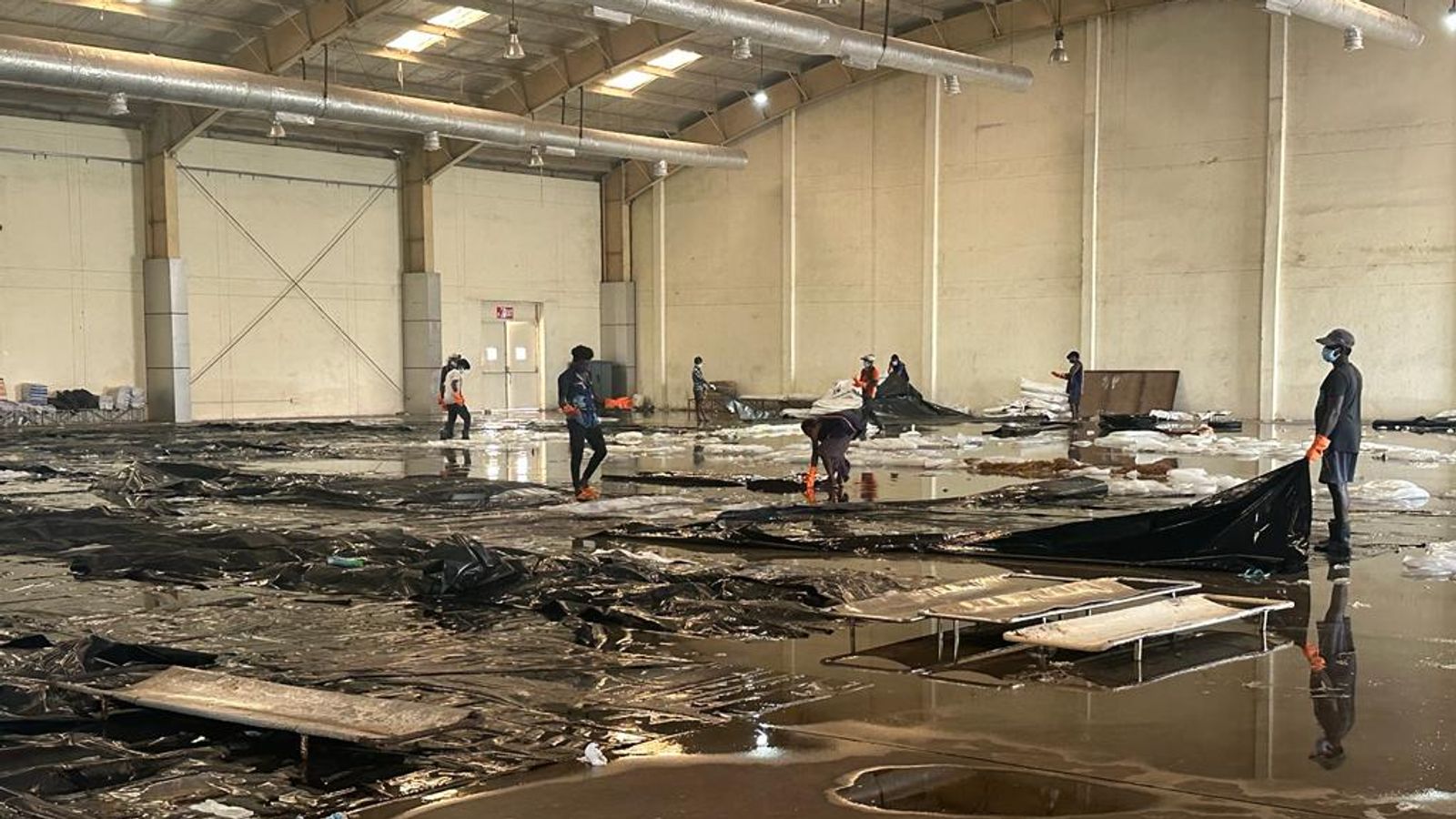The room is vast, cold and the stench of death hangs in the air.
Behind a plywood partition are rows upon rows of empty body bags.
Sanitation workers are sweeping the water that’s melted from countless blocks of ice.
This is where the bodies of the dead from the worst crash this century have been brought to.
It is a chilling and unforgettable scene.
Read more:
India train crash: How safe is the country’s rail network?
India train crash: Hospital resembles a war zone in town on front line of overwhelming tragedy
Harish Patel has watched as streams of victims were brought into the makeshift morgue in his NOCCI Business Park – the only place large enough to temporarily house the dead.
It is searingly hot in Odisha and preserving and protecting their bodies has been incredibly challenging.
Please use Chrome browser for a more accessible video player
Harish tells me: “It has been very difficult, lots of dead bodies coming in, lots of relatives coming in and searching for their dead. It was very difficult for them to identify them; the bodies were in a bad shape.”
Outside we meet Beena Devi. Her husband was killed in the train crash in Odisha and she is sitting on a wall in the afternoon sun sobbing.
She tells me she can’t believe she’s lost him – that she’s full of worry and her children are constantly crying out for their father.
She also faced the horror of identifying his body.
So many endured horrific disfiguring injuries in the crash.
She tells me “it made me feel senseless”.
The officials overseeing the process of identifying bodies tell me they have only been able to match 96 of the dead.
One-hundred-and-ninety-three others have been sent hours away to six morgues in the capital – with just a number and photo.
The hope is some of their relatives will be able to make the journey to locate them.
But so many of the bereaved live far away in remote rural areas and working out where to go there is very challenging.
The state government has put on free buses, but this is a vast country and it’s going to take time.
Train travel is central to India, but it’s under scrutiny.
Investigators appear to believe an interlocking track management system malfunctioned.
It’s meant to direct a train to an empty track when two meet and alert oncoming trains where to go. It’s also used across the country.
The railway minister has hinted at possible sabotage. But the public will also want reassurance that this is not part of a wider safety risk.
The government has been busy building new trains to meet demand.
They’ve made some improvements. In the wake of this huge tragedy, there may be many more to make.






















